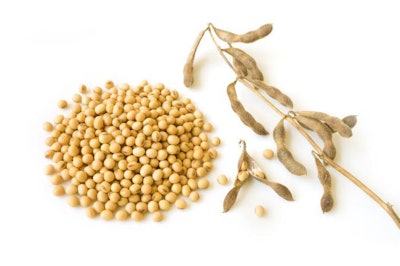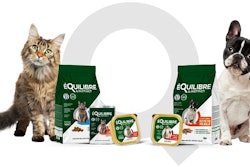
Some traditional pet food ingredients like soy, corn and wheat, and their derivatives, have long been demonized by so-called experts on the internet and even some pet food brands. Based mainly on unsubstantiated information, these ingredients often carry a perception in the minds of some pet owners as being unhealthy, non-nutritious, “cheap filler.”
Could that negative narrative be changing? According to recent consumer surveys, such demonized ingredients may be making a comeback, especially among younger pet owners seeking sustainable products; and new research may bolster their case.
Growing number of pet owners open to soy
In a 2021 survey of 4,381 U.S. cat and dog owners, ADM OutsideVoice, a division of ingredient supplier ADM, found that 80% were seeking or open-minded to having soy in their pets’ food. A full 15% described themselves as “seekers,” with 65% being open-minded (while 20% are “avoiders”).
ADM information attributes the seemingly growing acceptance of soy to consumers’ gravitation toward a more flexitarian diet for themselves—49% of adult respondents fall into that flexitarian category, according to OutsideVoice data—then wanting to feed their pets similarly. “These pet parents recognize the nutritional and health benefits provided by soy and they want them for themselves and their pets,” the company said.
Specifically, drivers for pet owners to consider pet food or treats with soy included it being a source of vitamins and minerals (54%), having high digestibility (48%) and serving as a source of fiber and antioxidants (40% each).
(Note: Gary Davenport, Ph.D., companion animal technical manager for ADM, will present this data, along with findings from additional consumer research on corn- and wheat-based ingredients, at Petfood Forum 2022 on May 3 in Kansas City.)
New research confirms nutrition benefits, sustainability
Pet food ingredients made from soy, corn, wheat and other commodities are often byproducts, another term often demonized. For one reason, it seems at odds with ever-growing clamor for “human grade” ingredients.
Yet the desire for human grade ingredients also creates a paradox for pet owners who say they seek sustainability in the products they buy, because byproducts are inherently sustainable, using parts of crops that would likely go to waste otherwise.
“Byproducts from soy, corn and peanuts have traditionally been used in pet foods as sustainable, inexpensive and protein-rich ingredients,” wrote my colleague Tim Wall, reporting on comments from researchers of a new study in the journal Translational Animal Science.
“However, the ongoing demonization of soy- and corn-based ingredients continues to hinder their use in pet food and treat formulations,” the scientists wrote in the journal. “Ideally, the further demonstration of their protein quality and nutrient composition may encourage their favorable return as acceptable ingredients in pet foods and treats.”
To that end, their study set out to build on an existing, longstanding body of research on these ingredients by testing soy flakes, peanut flour, soybean meal and corn gluten meal for the digestibility of the indispensable amino acids in them. The researchers concluded that the ingredients’ “high-protein, high-fiber and low-fat compositions make them easy to incorporate into pet food formulations, and their varied amino acid compositions provide an opportunity to combine them to create complementary proteins to meet the nutritional requirements of dogs and cats.”
The researchers only caution was that pet food manufacturers need to account for differences in the processing of these plant-based byproducts.
This is not the only research focused on traditional plant-based byproducts: For example, several Kansas State University students are studying various aspects of using corn and soybean products in dog and cat diets and treats. (Their research will also be presented at Petfood Forum, as part of its Student Research Program.)
Are tomorrow’s ‘novel’ ingredients yesterday’s old?
Such research can help pet food and treat manufacturers find “new” ingredients for their formulations—perhaps tomorrow’s novel is yesterday’s old?—and make the case to consumers that these ingredients are indeed healthy and nutritious. And the sustainability message should continue to resonate, especially with younger pet owners, as consumers become more concerned about climate change and the environment and seek to purchase accordingly.
I suspect there will always be a contingent of pet owners and others who will fall into the “avoiders” category when it comes to ingredients like soy; but a movement is afoot and has potential to continue to open more consumers’ minds and even turn them into “seekers.”

















